All issues

Volume 49 (1999)
- Issue 4 Pages 460-
- Issue 3 Pages 357-
- Issue 2 Pages 283-
- Issue 1 Pages 6-
Volume 49, Issue 3
Displaying 1-6 of 6 articles from this issue
- |<
- <
- 1
- >
- >|
-
Relations with Work-related DiseasesRyuta SAITO1999 Volume 49 Issue 3 Pages 357-368
Published: September 01, 1999
Released on J-STAGE: March 18, 2011
JOURNAL FREE ACCESSDownload PDF (2027K) -
John H. Ferguson, [in Japanese], [in Japanese], [in Japanese]1999 Volume 49 Issue 3 Pages 369-374
Published: September 01, 1999
Released on J-STAGE: March 18, 2011
JOURNAL FREE ACCESSDownload PDF (891K) -
Shigehisa KURIYAMA1999 Volume 49 Issue 3 Pages 375-381
Published: September 01, 1999
Released on J-STAGE: March 18, 2011
JOURNAL FREE ACCESSDownload PDF (938K) -
the Effectiveness of the zhongji (cv-3)Munenori MINAGAWA, Tatsuyo ISHIGAMI, Shigeru HORI, Norikazu TANAKA, Hi ...1999 Volume 49 Issue 3 Pages 383-391
Published: September 01, 1999
Released on J-STAGE: March 18, 2011
JOURNAL FREE ACCESSAt the 45th Japanese National Acupuncture and Moxibustion Conference, Kitakoji et al. of the Research Committee's Urology Group reported the results of controlled clinical trials, using the envelope method, on the effectiveness of acupuncture for urinary dysfunction. This was presented as a case in which the “Guidelines and Recommendations for clinical Trials in Acupuncture” were applied in actual clinical research. A controlled investigation was carried out by the Information and Evaluation Group, Research Section, Aichi Regional Association, at multiple institutions (9 hospitals and clinics) on the effectiveness of the zhongji (cv-3) point for urinary dysfunction, using the envelope method of Kitakoji et al. Although the zhongji (cv-3) point was not found to be effective against urinary dysfunction, we were able to demonstrate that it is possible to conduct controlled clinical trials at multiple institutions based on soft data.View full abstractDownload PDF (743K) -
The meaning of physical signs in clinical acupunctre therapyHirohumi TAKEDA, Sakae YONEYAMA, Yu SI, Tomohumi OZAKI, Tadashi YONEYA ...1999 Volume 49 Issue 3 Pages 393-403
Published: September 01, 1999
Released on J-STAGE: March 18, 2011
JOURNAL FREE ACCESSRecently, magnetic resonance imaging (MRI) has brought significant advancements in the diagnosis of spinal disorders. But there is much debate about the abnormalities detected by MRI clinically. In this study, we try to clarify the correlation between spinal abnormalities detected by MRI and physical signs in 45 patients with neck, shoulder, and low back pain. Physical signs were segmental sensory disturbance, amyotrophy, and radicular pain, and the abnormalities of MRI were bulging, protrution, extrution, and osteophytes. MRI showed a symptomatic change, that is a false positive (abnormality of MRI* (+), physical sign** (-)), in 26 of the 45 patients (57.7%), a true positive (+, **+) in 15 of 45 patients (31.1%), a true negative (*+, **-) in the remaining 5 patients (11.1%).
These results suggested that the physical signs are more important than the abnormalities of MRI in patients with neck, shoulder and low back pain. We think that the acupuncture therapist should carry out a more detailed physical examination of the patients clinically.View full abstractDownload PDF (1352K) -
Acupuncture for Indefinite Complaints Accompanying HypertensionYoshiyuki KAWASE, Yasuzo KURONO1999 Volume 49 Issue 3 Pages 405-410
Published: September 01, 1999
Released on J-STAGE: March 18, 2011
JOURNAL FREE ACCESS
- |<
- <
- 1
- >
- >|